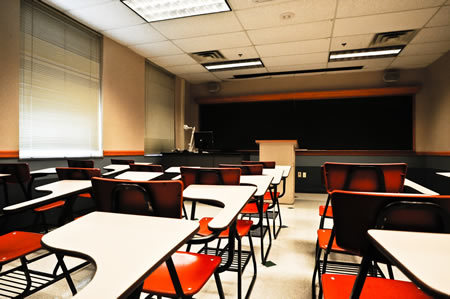U.S. Schools Earn a C

The nation receives a C when graded across the six distinct areas of policy and performance tracked by Quality Counts in an annual report card on the state of American K-12 education. For the third year in a row, Maryland is the top-ranked state, earning the nation’s highest overall grade, a B-plus. Massachusetts and New York follow close behind, each receiving a B. the District of Columbia, Nebraska, and South Dakota received grades of D-plus, with a majority of states earning a C or C-plus.
The publication Education Week, sponsor of the survey, reports that in two categories that provide broad perspective, “this year’s results offer a less-than-sanguine national portrait.”
A newsletter published by the Triangle Coalition, an education advocacy group, reports that although economists have declared the recession over, the nation and states continue to struggle back from the most severe economic downturn in generations and face new challenges in delivering a high-quality education to all students. The report reintroduces its K-12 Achievement Index, which evaluates the strength of a state’s performance against 18 individual indicators that capture: current achievement, improvements over time, and poverty-based disparities or gaps. Massachusetts emerges as the top-achieving state this year, earning a grade of B, followed closely by Maryland and New Jersey, each with a B-minus. Perennial strong performers, these states also comprised the nation’s top three scorers in 2008, the last time the index was updated.
Despite some solid showings, a wide gulf separates the leaders from the rest of the pack, with the average state earning a D-plus on K-12 Achievement. Four states — Louisiana, Mississippi, New Mexico, and West Virginia — and the District of Columbia receive grades of F on the index.
The theme of this year’s report is “education and the economy,” and it probes the impact of the recession on the nation’s schools in policy, personnel, and programs, and outline the challenges — and opportunities for innovation — in store for state and local officials as they move forward.
According to the report, though nearly every state felt the sting of the economic climate, a complex and varied set of regional factors amplified the fiscal damage for states already struggling with budget pressures, while leaving a handful of others virtually unscathed. But with education typically making up at least half of a state’s overall spending mandate, K-12 suffered in most states — and badly. The economic situation was particularly dire in states that bore the brunt of the foreclosure crisis in the housing market — including Arizona, California, Florida, and Nevada — with a corresponding impact on precollegiate education owing to the close linkage between property-tax revenues and school funding.
Filed under: K-12 Education News
Tags: Education Policy, Public Policy, Research, Research on Learning








